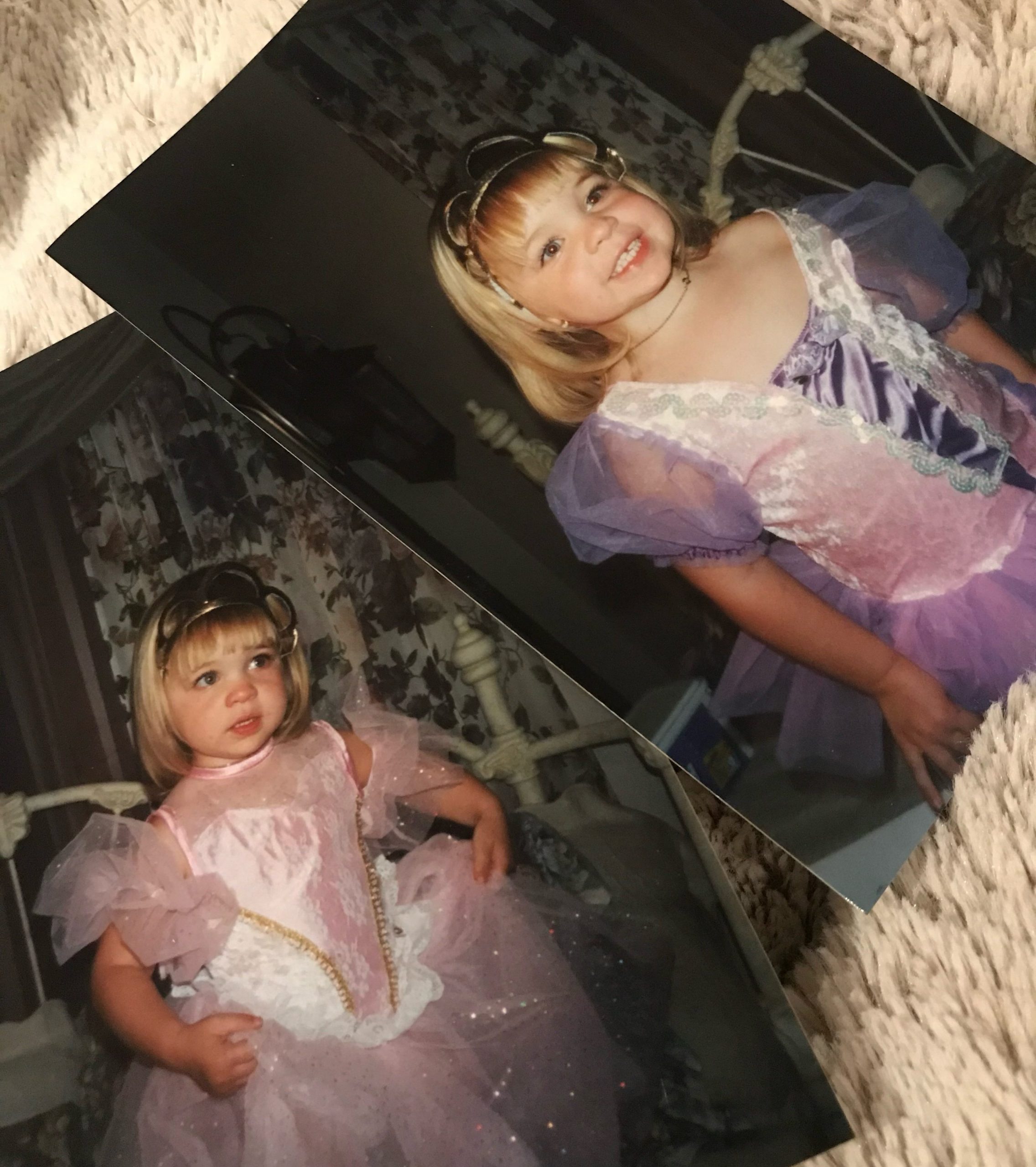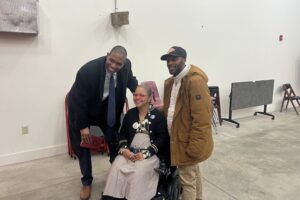Having alopecia, Maggie D’Amaro gains new perspective on life
Having alopecia, Maggie D'Amaro gains new perspective on life

Maggie D’Amaro sits in the chair, her patience evaporating as the salon workers scurry back and forth ignoring her. Eleven-year-old Maggie wishes to be anywhere else.
Seven hours and $2,000 later, the salon workers place the thick, dark-brown wig on top of young Maggie’s head. The custom human hair wig falls right above her shoulders. It’s itchy. It’s uncomfortable. She hates it.
“When they put it on her, she ripped it off her head, threw it across the room and said, ‘I’ll never wear it,’” said Maggie’s mother, Carol D’Amaro. “It was devastating.”
Maggie remembers not feeling like herself in the salon that day. “Hair is a form of expression and I felt like I wasn’t expressing myself,” Maggie said.
Two years earlier, Maggie stands in the bathroom, brushing her dirty-blonde hair with a red-wire brush. The brush passes easily through her long hair, but as she looks down, she sees a clump of hair in the brush.
Bewildered, she plucks the hair out of the brush, places it into the sink and runs the brush through her hair again. Another chunk of hair comes out.
“It was like 50% of what I put my fingers through was in my hand,” Maggie said.
Her mother made her an appointment with her doctor, and soon she would learn she had a chronic disease: alopecia areata.

Alopecia areata is a skin disorder that results in hair loss, most often on the scalp, with onset typically occurring in childhood, according to the National Alopecia Areata Foundation.
Now a senior economics major at Syracuse University, Maggie has lost her leg and arm hair and parts of her eyebrows. She has gone completely bald three times: when she entered middle school, high school and college. Each time her hair grew back, the texture changed. Over the years, Maggie has had curly, coarse and thick hair.
Approximately 6.8 million people in the United States will develop alopecia areata, and although there is no cure, there are several available treatments that vary on the individual’s age and extent of hair loss, according to the National Alopecia Areata Foundation. Alopecia areata may also lead to psychological conditions, including depression, anxiety and sadness.
Growing up during a time where few women had short hair, Maggie wore headscarves and hats to help cope with the disease.
“I would put this little do-rag on her and bring the knot to the side so that it almost looked like a side ponytail and pinned a flower clip to it,” Carol said.
But the style choice did not prevent others from making assumptions about Maggie’s condition.
“Many strangers thought I had cancer, so they would talk to me as if I had cancer,” Maggie said.
Every time Maggie went out in public, she said people would stare at her. Although she was never forthcoming with her disease, she always reassured them that she was going to be OK.
“Even if she’s going through something, she always has a smile on her face and looks at everything on the bright side,” said Courtney Owens, Maggie’s best friend.
Her safe spaces were her home and dance studio. Girls at the dance studio were always the most supportive, reaffirming and reassuring toward her. “They always made me feel and look beautiful,” Maggie said.
Dance also allowed Maggie to become comfortable with looking at herself in the mirror.
“There were years in which her dance bill was over $20,000 a year, but it was well worth it,” Carol said.
Maggie is involved with DanceWorks, an audition-based dance organization at SU. Last year, she was internal and external outreach on DanceWorks’s executive board as well as a contemporary choreographer. This year, because of the coronavirus pandemic, she is just a cast member.
DanceWorks has “helped her find that connection with friends who love her for who she is,” Owens said.

When she was first diagnosed, she began using various foams and creams on her scalp. After deeming them too messy and painful, Maggie stopped using them and began getting intralesional steroid injections every four weeks.
Tears streaming down her face, hand squeezing her mother’s and face scrunched up in pain, Maggie always got her treatments done with nothing but a chunk of gauze. She believed any pain relief device would decrease the effectiveness of the treatment. This caused Maggie to start to think that if it didn’t hurt, it wasn’t working.
She once had a nurse do it instead of her doctor. “I’ll never forget just how devastated I was when he left,” Maggie said. “I turned to my mom and told her that I was not going to see results this month because he was so gentle.”
When she was 14, Maggie and her mother would drive about 100 miles round trip three times a week every month to receive laser therapy.
Maggie now has strong, lustrous shoulder-length hair after switching to a steroid called jakafi/briova. Taken twice a day and requiring monthly blood work, the medication is brand new to the market, making Maggie a clinical-trial guinea pig.
Living with alopecia areata has helped Maggie look at life from a different perspective, enabling her to become a stronger leader and better person.
“I don’t know of another person who has had as much adversity as she had,” Owens said, “and still come through on the other end and be okay.”





